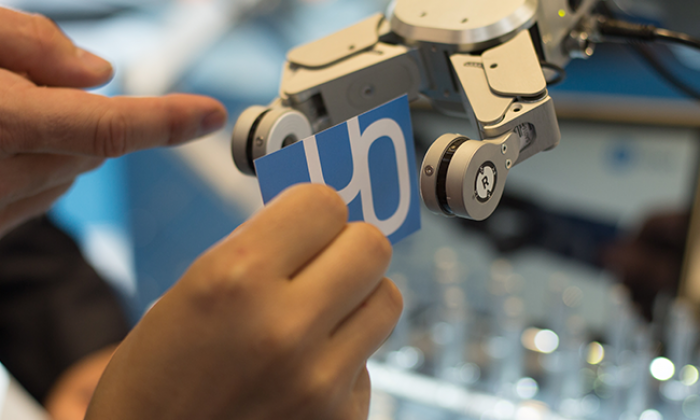Smarter and more versatile robotic tools, or end-of-arm tooling (EoAT) — sensors, grippers and quick changers —empower robots to take over repetitive tasks, freeing them to handle adaptive, higher-precision and more intelligent applications that in the past were too complex to automate.
More importantly, these advanced tools enable collaborative applications that allow workers and robots to operate safely side by side due to the user-friendly nature, intuitive programming and safety features of EoAT-fitted robots.
These innovations have helped increase EoAT adoption significantly. According to QYResearch, the global robotics EoAT market, valued at US$1,580 million in 2018, is expected to reach US$2,740 million by the end of 2025, growing at a CAGR of 7.1 percent from 2019-2025.
Since each production facility varies in terms of such things as the task to be automated, product shape and size, and materials and robot, manufacturers must find the robotic tools that best suit their unique needs.
Prioritizing EoAT Before the Robot
Due to technological advances, EoAT has become more sophisticated and capable. Now, how robots are deployed and what accessories are fitted and utilized will become more integrated than robots alone. In the past five years, robots have been used in a wider range of applications than ever before because end-effectors can now function better in more environments. Apart from handling variations in product size, weight, and shape, EoAT also enables robots to accommodate several processes at once. With EoAT bringing these enhanced capabilities to robots and this trend expanding across manufacturing, we will soon see robots becoming commodities. The kind of robot used won't matter so much as the EoAT for the job.
And, with more players entering the market and offering more advanced solutions at a reduced price, manufacturers need to focus on ‘more tools, more applications' rather than ‘more robots, more applications.'
EoAT is expanding the breadth of applications in which industrial robots, or collaborative robots (cobots), can be used by making them smarter, more reactive and independent. This helps manufacturers meet a range of production goals, from being more flexible and more responsive to market changes and fulfilling customer needs to increasing the overall speed of innovation. So, manufacturers need to focus on the style of tooling that best suits the needs of a particular application before deploying robots.
Evolution of EoAT
Various tools help manufacturers meet their production goals. For instance, OnRobot's RG2 and RG6 Grippers, which can grip products of differing size and materials, enable such applications as machine tending, pick and place, packaging and palletizing, and assembly.
These grippers are easily installed and provide more flexible production with less downtime. They are cost effective and can handle large process variations, as well.
Rosborg Greenhouse, Denmark's largest herb producer, employed the RG6 gripper to eliminate monotonous work and reduce high labor costs by working alongside a human to pack delicate herbs. The company cited the gripper's flexibility, wide stroke and gentle grip as three reasons they chose OnRobot as their solution provider.
The RG2-FT, the world's first intelligent gripper that can see and feel objects using built-in force torque sensing, is another innovative tool that helps manufacturers make their production more efficient. Apart from its straightforward installation and program, the tool can detect the workpiece location even if it's not precisely positioned. This increases production efficiency, reduces the risk of damages to the product and offers greater precision in handling, making the application safer for workers, as well as the workplace.
Improving Return on Investment (ROI)
A robot's ability to handle a growing range of industrial tasks thanks to EoAT leads to faster return on investment (ROI) for manufacturers. That's because they're flexible and easily deployed, allowing them to switch between multiple tasks with minimal need for additional programming or tool swapping.
The robotic tools also increase production since they can operate around the clock, completing tasks with greater precision and reliability than human operators while doing so. The safe, collaborative and intelligent nature of EoAT also lowers the automation cost since workers can work with them without additional safety fencing, complex programming or installation costs.
The Future is Collaborative Applications
With the dawn of smarter, more adaptive tooling, robots can now function with greater speed, strength, safety and precision, accomplishing a wide range of tasks and helping manufacturers maximize ROI.

